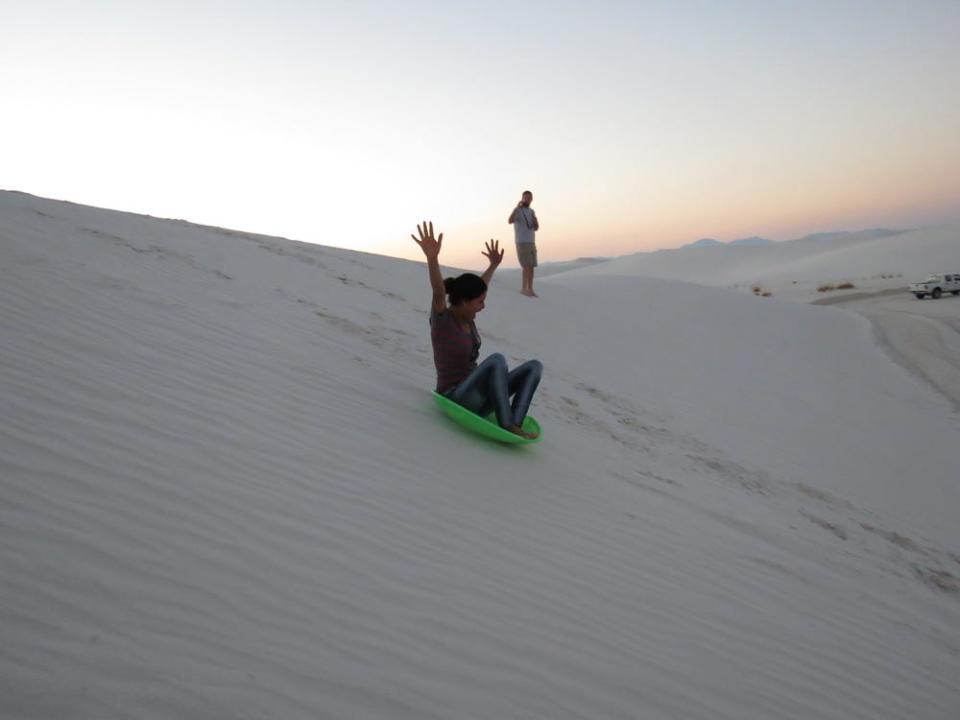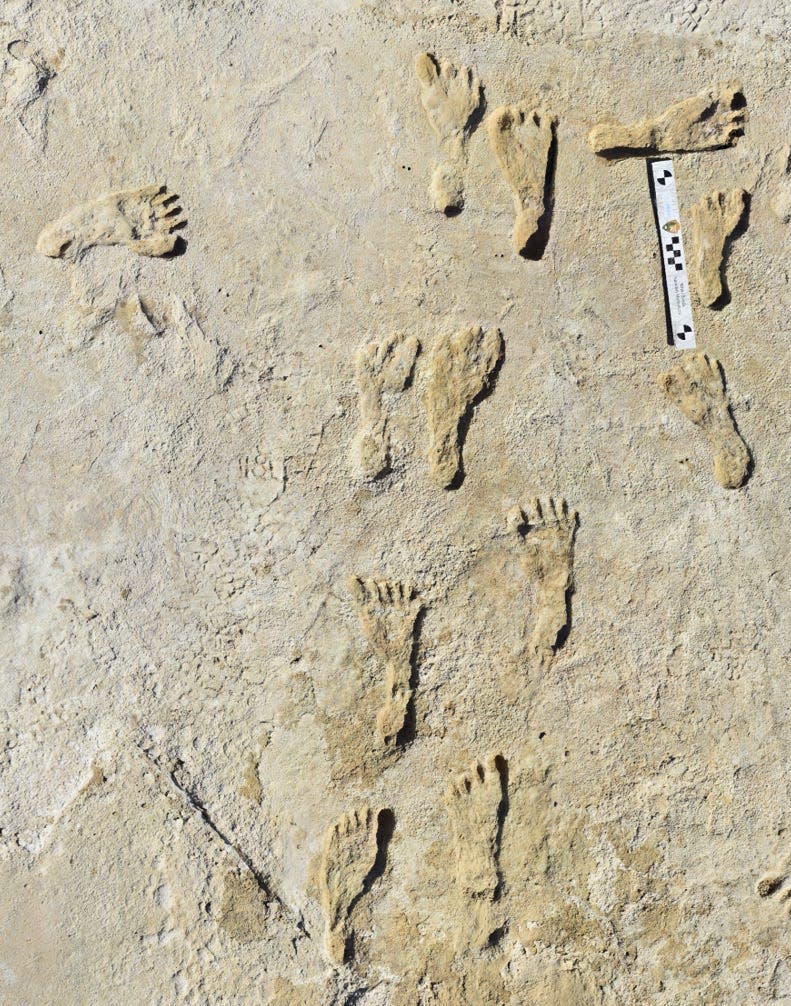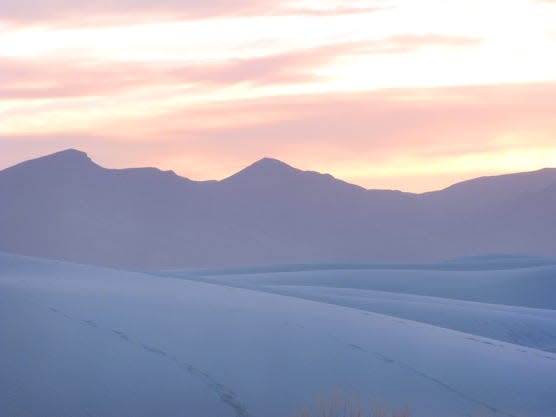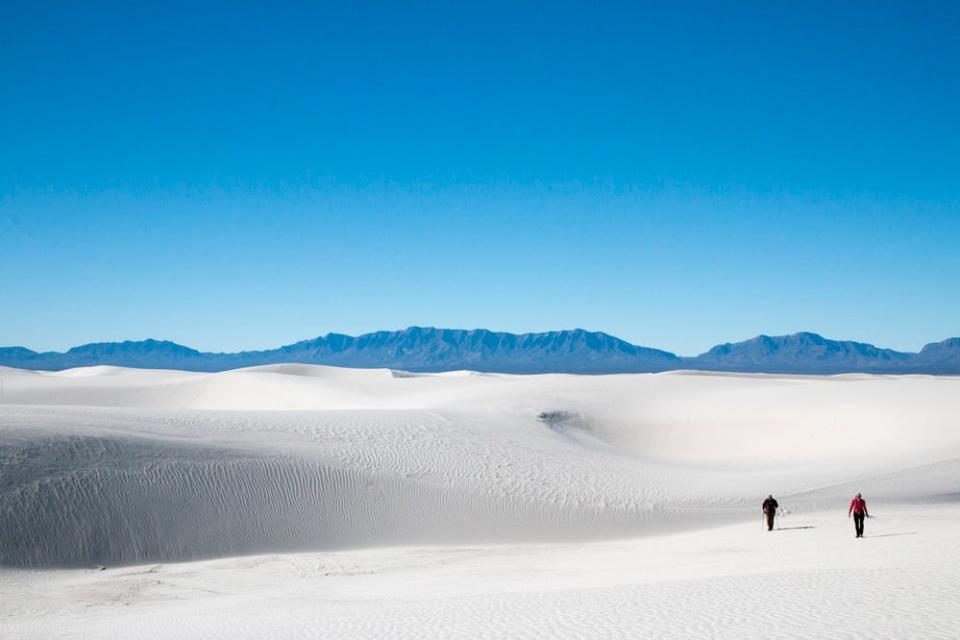Sand sledding, barefoot hiking: Welcome to White Sands National Park
There’s a vast expanse in New Mexico where you can hike barefoot, sled any time of the year and feel like you're on another planet. Welcome to White Sands National Park.
A national monument until 2019, White Sands National Park is home to the largest gypsum dune field in the world – gypsum being a soft sulfate mineral used in materials like plaster. The 275-square-mile dune field was once underwater of the 1,600-square-mile Lake Otero, which dried up 10,000 years ago and left minerals on the seafloor of what’s called the Tularosa Basin. Through cycles of evaporation and wind erosion, sand built up into dunes.
Now people can be amongst huge, pristine rippled white sand dunes as far as the eye can see. Visitors also flock to the powdery dunes to sled down on plastic saucers, which can be purchased at the gift shop, for a thrilling desert adventure. Of course, there's hiking and backcountry camping too.
“It’s a place that has a little bit of everything or something for everyone, and it also feels like you’re on another planet,” said Brian Powers, White Sands National Park Public Information Officer and Interpretation program manager. “It really does, like you are somewhere else. It’s truly a special environment.”

Here’s what travelers should know about White Sands, the latest national park in USA TODAY’s yearlong series.
What is so special about the White Sands National Park?
No matter what time of day – or even night – you’re visiting the park, visitors can expect a different experience of natural beauty, said Marie Sauter, Superintendent of White Sands National Park. In the early morning, the park offers gorgeous sunrises, and at dusk, equally stunning sunsets. At night, the park offers beautiful night skies and stars. “And then, of course, the playing of the light and the shadows within the white dunes are spectacular,” she said. “It’s just drop dead gorgeous.”
What's the most visited national park? Answers to your biggest park questions

Besides the scenic vistas, there’s also a 23,000-year-old human history in the park, with the footprints of mammals like humans, saber-toothed tigers and giant mammoths dating back to the Ice Age Pleistocene epoch built into the layers of the gypsum dune system – the largest collection of Ice-Age fossilized footprints in the world. “It’s just a take-your-breath moment, it’s one of the highlights of my career, honestly,” she said.
How much does it cost for one vehicle to enter White Sands?
The entrance fee for one car to enter White Sands is $25.
Can you just drive through White Sands National Park?

Starting at the Visitor Center, Dunes Drive is an eight-mile scenic drive of the park, and it’s one way in, one way out. The first five miles are paved, but the final three miles consist of a hard-packed gypsum sand road, which is bumpier and has more potholes.
Can you walk barefoot at White Sands National Park?

Not only can you sled in the sand, but you can walk on it barefoot, depending on the time of year and where you are in the park, said Powers. For example, if you’re on an inner dune, which has more vegetation, you may come across pokey plants that won’t be too friendly to bare feet. As the weather gets warmer, the top layer of sand dries out so it’s not as cool. However, since gypsum reflects the heat of the sun rather than absorb it, it’s not as hot as the sand found at the beach.
Sauter said she often hikes in socks just so the “tops of my feet don’t get burned” from the hot sun.
What movies were filmed in the White Sands?
Quite a few.
White Sands National Park has been the backdrop to several major movies since 1950 starting with “King Solomon’s Mine.” The 1968 western movie “Hang ‘Em High” was filmed in the park as well as the 1991 crime drama “White Sands” featuring Samuel L. Jackson and Willem Dafoe.
The hit action movies “Transformers” and “Transformers 2” were also filmed at the White Sands Visitor Center. The 2009 movie “Book of Eli,” which featured Denzel Washington and Mila Kunis also took place in the scenic park.
When filming the desert scenes taking place in the Middle East in “The Men Who Stare at Goats, actors George Clooney, Ewan McGregor, Kevin Spacey and Jeff Bridges were in White Sands National Park.
Who are the Native people of White Sands National Park?
The park formally consults with dozens of Native American tribes and pueblos across the Southwest, but Sauter notes there may be others with historic ties to the land, for instance in northern Mexico.
“These political boundaries that we've created now just simply didn't exist (back then),” she said.
The park has partnered with several of the tribes and pueblos to learn more about ancient human trackways preserved in White Sands.
“From what I understand, from our conversations with our tribal and puebloan affiliates, these footprints represent the people who are their ancestors,” Sauters said, adding that it warms her heart to continue caring for the land along with them.
Contributing: Eve Chen, USA TODAY
This article originally appeared on USA TODAY: This national park's powdery white sand dunes feel otherworldly


